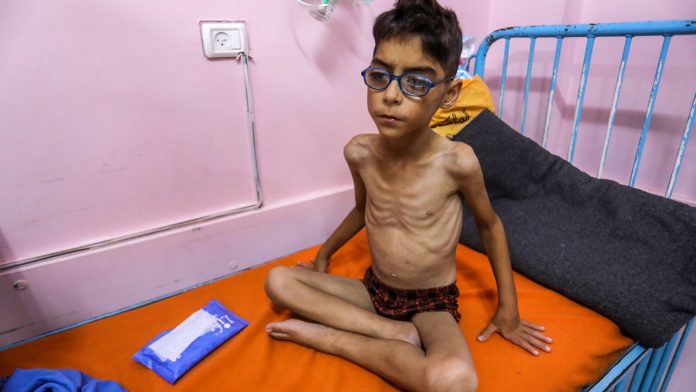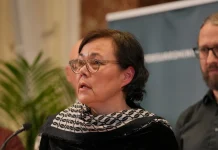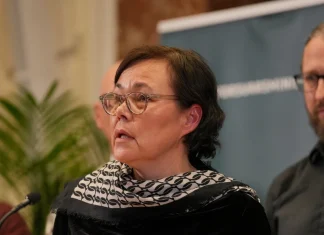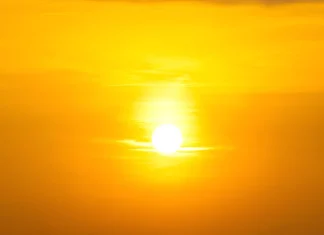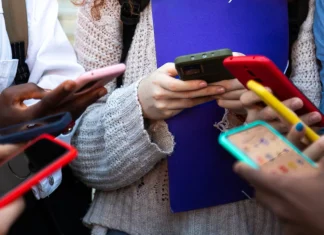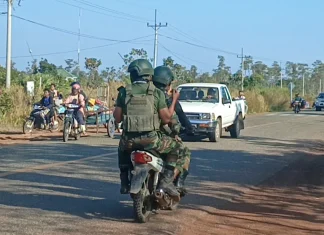Inside Gaza’s Heartache: A Doctor’s Harrowing Account from the Frontlines of a Humanitarian Crisis
In the shadowed corridors of Gaza’s Al Shifa Hospital, where hope is as scarce as medicine, Dr. Ahmed Yousaf—a pediatrician from the United States—witnesses a tragedy that defies the stark statistics reported in headlines worldwide. Gaza, a strip of land home to two million people, is a fractured landscape of suffering, hunger, and shattered dreams. Yet, it’s the faces of children, skeletal and haunted, that linger long after the day’s grim work ends.
The Slow Death of a Community
“You can see every rib on the children here. It’s not just hunger—it’s starvation, the slow erosion of life,” Dr. Yousaf tells me over a crackling line from Gaza. “But it’s not what people in the West imagine when they hear ‘famine.’ It’s a long, drawn-out process. These children aren’t just starving for days—they’ve been denied proper nutrition for months, if not years.”
There’s a haunting rhythm to the medical ordeal he describes, where malnutrition stretches beyond mere hunger into a cascade of ailments rarely seen outside crisis zones. “I see children whose chances of growing into healthy adults are close to zero,” he says quietly. “Many will die not from the violence we hear about but from the absence of the basics—food, clean water, medications.”
It’s the impossible environment that stuns—an urban hospital, once a beacon of healthcare in Gaza, now reduced largely to rubble. Al Shifa Hospital, historically the largest and most vital medical facility in Gaza, operates at a fraction of its capacity, frequently out of supplies.
“Most days, we are scavenging—scavenging for bandages, painkillers, antibiotics—just enough to do the bare minimum for our patients,” Dr. Yousaf explains. “And all of this is superimposed on a backdrop of hunger—an almost entire lack of basic nutrition that has been slowly choking this place for nearly two years.”
A Siege on Life: The Long Chokehold
It might be tempting to imagine the crisis here as a sudden outbreak—a famine or a wartime catastrophe striking overnight. But Dr. Yousaf’s account reveals something more insidious: “The starvation didn’t just start a month ago. It has been gradually suffocating Gaza for 22 months, with only rare, inconsistent aid slipping through in the last few months. Locals tell me it’s worse now than it’s ever been.”
Imagine that—almost two years of slow strangulation where the simplest human need, food, becomes a scarce resource. Families scramble daily not just for survival but to keep illnesses at bay, knowing that without nourishment, their loved ones are fighting a losing battle before the hospital’s doors even open.
Lives Torn Apart by Violence and Hunger
Dr. Yousaf’s work on the ground extends beyond malnutrition. Many of his patients are victims of acute violence—young men and boys wounded by gunfire often described as “military rounds.”
“These are usually the ones risking everything to grab aid for their families,” he shares, his voice breaking with the weight of each story. “I’ve held the hands of dying teenage boys who explained, ‘I didn’t have a choice.’ When I ask them who shot them, they say, ‘The military—the IDF.’ These aren’t abstract political lines; they are raw wounds, both physical and emotional.”
Such testimonies are powerful beyond words. They are the voices of those trapped in a crucible of violence and deprivation, caught amidst the crossfire between military operations and a humanitarian nightmare.
Witness to a Crisis Worsening With Each Passing Year
This is Dr. Yousaf’s second time volunteering in Gaza. A year ago, when he first arrived, he hoped his worst impressions would remain confined to the past. Instead, the situation has deepened. “Last year was bad,” he says gravely. “But this year? The level of brutality and inhumanity is beyond what I thought possible, even in 2025.”
Such candor is rare but necessary. It’s a stark reminder that global conflicts don’t fade from view—they metastasize when ignored, each year leaving behind more physical and emotional rubble.
What Does This Mean for the World?
Gaza’s crisis may feel remote for many readers, but the desperate plight Dr. Yousaf describes challenges us all to ask difficult questions: How do we respond when entire populations become collateral damage? What responsibility do global communities bear when humanitarian aid becomes a lifeline precariously dropped from above, rather than a right secured beneath fingers tightly gripped in conflict? And fundamentally—what does it say about us, as a global society, when children’s ribs are visible beneath sunken skin, not from a famine but from systemic neglect?
Healthcare systems collapsing, children with untreatable wounds, families starving slowly in crowded urban landscapes—their stories demand more than statistics. The United Nations and humanitarian organizations have repeatedly urged an immediate halt to escalating violence, emphasizing that the basic needs of Gaza’s population must be met without delay.
But despite the rhetoric, relief remains elusive. Aid convoys are sporadic, hospitals strained beyond capacity, and the toll on human life continues to rise.
Faces Behind the Headlines
Walking through Gaza’s narrow, dusty streets, one meets faces that tell stories of resilience amidst crushing hardship. Mothers clinging to babies too weak to cry. Boys playing soccer with makeshift balls, their laughter a fragile sound amid the chaos. Elders sharing tales of a time before the conflict overshadowed their lives.
Dr. Yousaf’s perspective reminds us that these are not mere victims or statistics. They are people—their suffering vivid and personal, etched in every glance exchanged, every medic’s hurried step, every whispered prayer for relief.
For those of us watching from afar, it’s tempting to feel helpless or overwhelmed. But perhaps the first step is simply bearing witness—to hear, understand, and carry these stories forward. Because in the devastating details of Gaza’s crisis lies a universal truth: every human life matters.
Reflection: What Will We Do?
As you close this story, I invite you to reflect on the shared humanity that binds us, regardless of borders or politics. How do we ensure that no child, anywhere in the world, has to fight a losing battle against starvation while hospitals crumble and bullets fly? How do we maintain hope and compassion amid despair?
Dr. Yousaf’s account is a call to conscience. The question now is: will we answer it?


